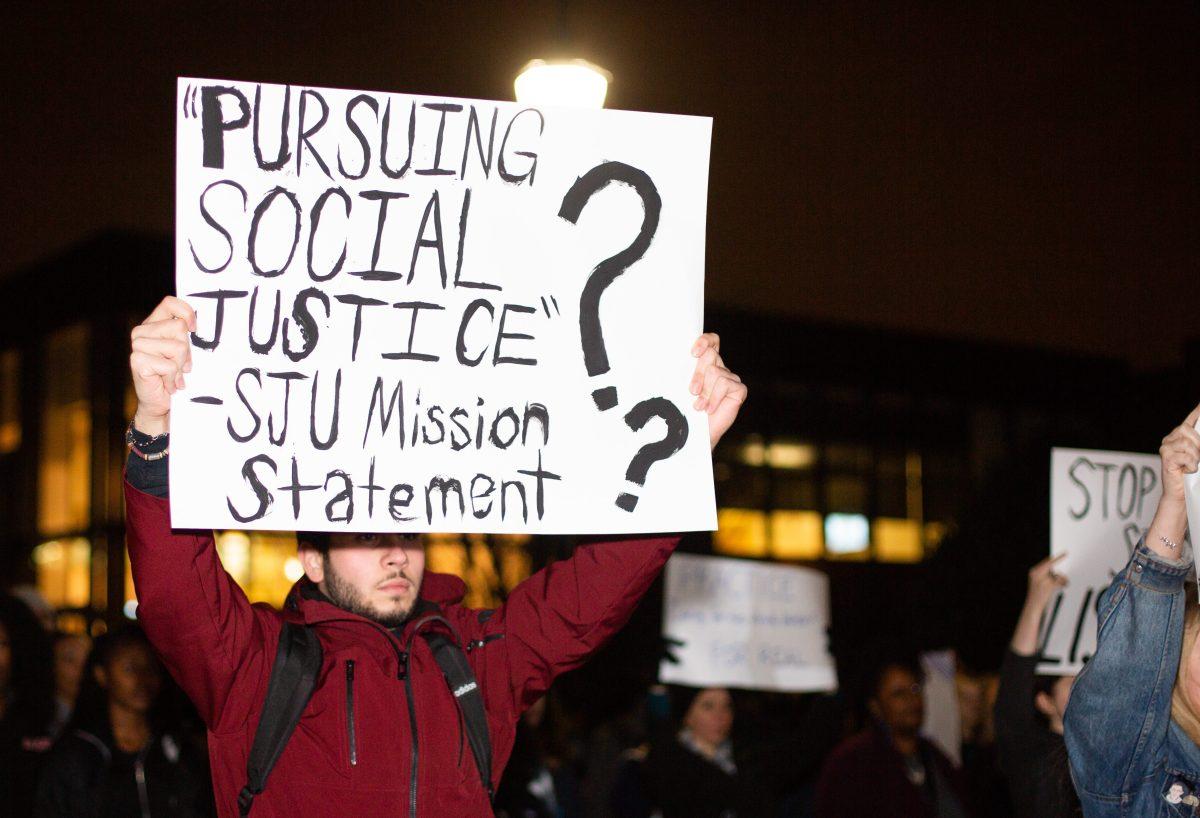Faculty members with experience in restorative justice see a need for a new approach in handling bias-related incidents on campus.
Restorative justice involves mediated conversation between a victim, an offender and, often times, representatives of the larger community. The goal is to negotiate a resolution and provide education to prevent the offender from causing future harm.
In the bias incident reported in the Nov. 28 issue of The Hawk, where a white student rearranged letters on the door of two black students, spelling a racial slur, restorative justice would be less about punishment and more about conversation, said Don Haldeman, J.D., adjunct professor of sociology and restorative justice coordinator.
“In the context of a college campus, restorative justice is about getting students together, having them hear each other,” Haldeman said. “In the process of telling their story, in the process of other people supporting them by telling them their story, you come to a place of healing. People feel better about what happened and their response to it.”
For Haldeman, who said he would still advocate for community service or some sort of sanction against the student offender, restorative justice is not just a reactionary measure, but a way to proactively affect the campus climate.
“Once you really know each other, it becomes much harder to harm each other,” Haldeman said. “So the whole idea about restorative justice is to bring students closer together and have a healthy response when incidents do arise.”
Haldeman said the complicated nature of restorative justice process may be one reason why St. Joe’s hasn’t adopted its practices.
“There’s nothing easy about it,” Handleman said. “And St. Joe’s has dodged that process for a long time. They always look for easy solutions. But I think maybe they’ve missed the real solution.”
The solution most needed is one that shifts the perspective of students to avoid the biases that structural racism can enforce, said Susan Clampet-Lundquist, Ph.D., associate professor of sociology and director of the Faith-Justice Institute.
“You have students that may be coming to campus who have been been raised in a racist context,” Clampet-Lundquist said. “I’m not saying their families are racist. I’m saying our society is racist. If you’re not conscious about it and you’re not conscious about white privilege, you’re going to be reproducing hateful interactions, and that doesn’t make our community here a welcoming community.”
These racially-driven perspectives, if unchecked, have been found to impact classroom dynamics.
“It is very hard to discuss race in a classroom where most of the students are white, because minority members have to be especially brave to speak out,” said Betsy Linehan, RSM, Ph.D., associate professor of philosophy. “Many white students become defensive when things like privilege come up. This is not a matter of ill will, just of very different experiences.”
Melissa Logue, Ph.D., assistant professor of sociology and member of the President’s Council on Inclusion and Diversity, said students of color have told her about professors being discriminatory and acting from a place of bias.
“I think a lot of times, we think [discrimination] is just from other students,” Logue said, “But as the Climate Study showed, it’s from faculty too. If they were sitting there with some of those blinders on, then how do we educate our students?”
The result of the campus Climate Study, released in October, revealed many students of color feel excluded on campus.
In fact, before educational and restorative practices can happen, the problem of racism needs to be acknowledged, Logue said.
“I think the fundamental thing that needs to happen, even for restorative justice to be effective, is the university’s culture itself has to change,” Logue said.
That means acknowledging there is an issue at all, Clampet-Lundquist said.
“Stop denying that there is an issue going on here,” Clampet-Lundquist said. “When we try to keep privilege invisible, we’re not going to deal with it.”
If the process of handling these instances, and the overall climate towards race doesn’t change, Clampet-Lundquist, Haldeman and Logue all pointed out that these kinds of incidents will keep happening.
“You and I both know that next December, we’ll be having the same conversation about a new incident,” Haldeman said. “Is there a way we can not have this conversation a year from now?”















































